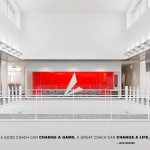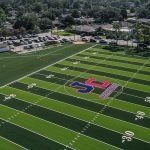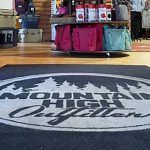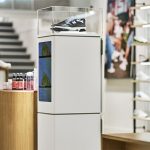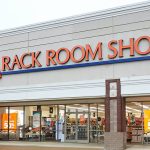Foot Locker, Inc. took a hit to the bottom line in the first quarter, but the worlds-largest-athletic-footwear-retailer is moving quickly to make the adjustments in the business that will help it right-size inventories and increase earnings in the second quarter. The sharp drop in Q1 earnings was seen as a result of weak performances in the U.S. units that resulted in higher-than-expected markdowns. The increase in inventory at the end of the quarter was said to be a reflection of the missed sales plan and the one week calendar shift from last year, but a quarter of the increase also came from fluctuating foreign currency exchange rates. Management said they are focused on getting inventories back in line before back-to-school.
Foot Locker management said that first quarter results fell “well short” of expectations at the start of the quarter and the earnings shortfall was due primarily precipitated to a weak performance and additional markdowns at the U.S. stores. First quarter profit at each of the U.S. store businesses apparently fell short of plan and last year's results. However, profits at each of the international businesses, as well as the DotCom unit, were “pretty much in line” with the plan.
The U.S. Foot Locker business, which includes the Foot Locker, Kids Foot Locker and Lady Foot Locker nameplates, saw comps decrease in mid- to high-single-digits. Footaction declined at a similar rate, while Champs declined in the mid-singles. Footlocker.com, which includes the Eastbay business, were “essentially flat,” but the year-ago sales included the NFL Shops business. Domestic footwear comps decreased approximately 4%, while apparel and accessory comps declined approximately 15%. Mr. Serra said the decline in U.S. footwear comps was due primarily to a decrease in average selling prices as a result of the higher markdown rate over last year. Footwear unit sales were roughly flat to last year.
Company Chairman and CEO Matt Serra pointed to a number of factors for the weaker U.S. business, including a slowdown in overall consumer spending; continuing fashion shift towards brown shoes; a very slow start to a warmer spring season; and the Easter and school holiday calendar shift to earlier than last year.
“I'm disappointed that we did not do a better job in adjusting our merchandising strategies to react to these sales challenges,” said Serra. “Quite simply, we bought too much of the wrong merchandise during the first quarter.”
The men's basketball business continued to be solid, led by strong sales in the marquee category. Men's running shoes were weak, although they did call out Nike Shox, Asics, certain New Balance styles, and adidas Bounce styles as key performers. The premium classic footwear category was described as “mixed,” with AF 1's, Nike Prestige, adidas Superstar, and Chuck's generating “strong sell-throughs.” Heelys and skate shoes from adidas and Nike were also called out as strong performers. The boot business and cross training, along with apparel and accessory sales, were described as “extremely weak.”
On the international front, Foot Locker Europe saw an improvement, posting a low-single-digits decline in comp store sales, while total sales increased approximately 10% for the quarter, reflecting “a larger store base and favorable foreign exchange rate comparison.” Comp store sales at Foot Locker Canada and Asia Pacific each increased in the low-single-digits. Foot Locker Europe generated a “very healthy profit increase” versus the Q1 last year. Comp store sales in Europe declined very low-single-digits.
By month, overall comp store sales decreased in mid-single-digits in February, increased low-single-digits in March, and decreased “slightly over 10%” in April. The combined March/April period comped down in the mid-singles.
The gross margin decline in Q1 was the result of a 200 basis point decline in merchandise margins and a 130 basis point increase in the occupancy expense rate. The merchandise margin decline included a 370 basis point decrease at the retailers domestic stores, reflecting the higher markdowns taken to clear goods. Conversely, merchandise margins in the international stores improved by 220 basis points, primarily reflecting lower markdown levels at Foot Locker Europe.
The retailer has continued its aggressive markdown strategy in the U.S. stores in the second quarter to clear the slower moving product, but will not slow down receipt of stronger marquee product. Inventories will still increase in the mid-single-digits by the end of Q2, due in large part to a one week calendar shift versus last year, but earnings per share are still expected to be in the range of 15 cents to 20 cents per share, up from nine cents a share in Q2 last year. The EPS estimate is base din part on flat comp store sales growth for the period.
For the back half, Foot Locker sees comps increasing in low-single-digits for the fall season, while gross margin and SG&A are forecast to be “relatively flat to slightly unfavorable.” Full year earnings per share are seen in the range of $1.15 to $1.25, down from $1.60 per share last year.
| Foot Locker, Inc. | |||
| First Quarter Results | |||
| (in $ millions) | 2007 | 2006 | Change |
| Total Sales | $1,316 | $1,365 | -3.6% |
| GP % | 27.4% | 30.7% | -330 bps |
| SG&A | 22.0% | 20.7% | +130 bps |
| Net Income | $17.0 | $59.0 | -71.2% |
| Diluted EPS | 11¢ | 38¢ | -71.1% |
| Inventory* | $1,490 | $1,403 | +6.2% |
| Comps | -5.1% | +0.5% | |
| * at quarter-end | |||

